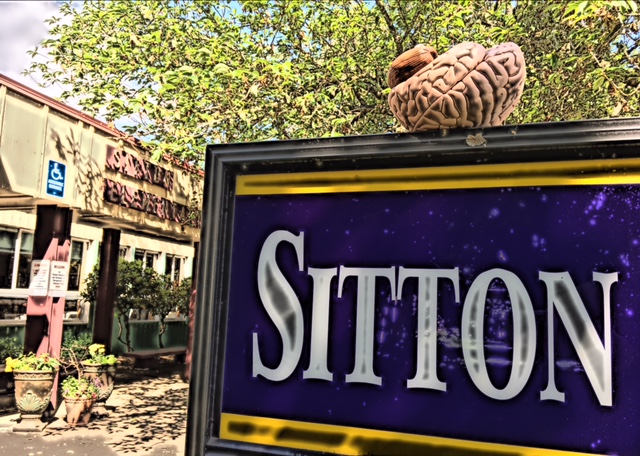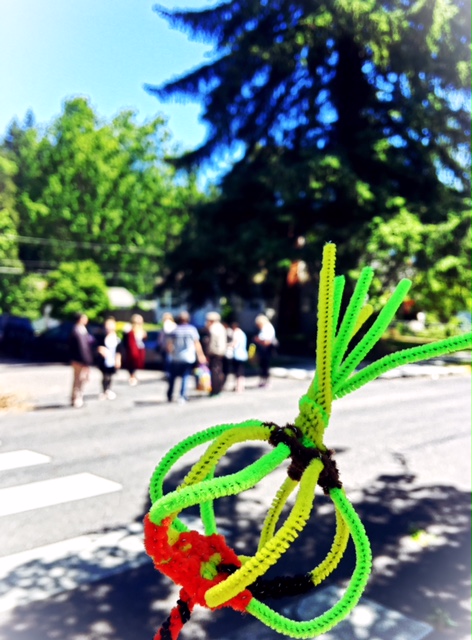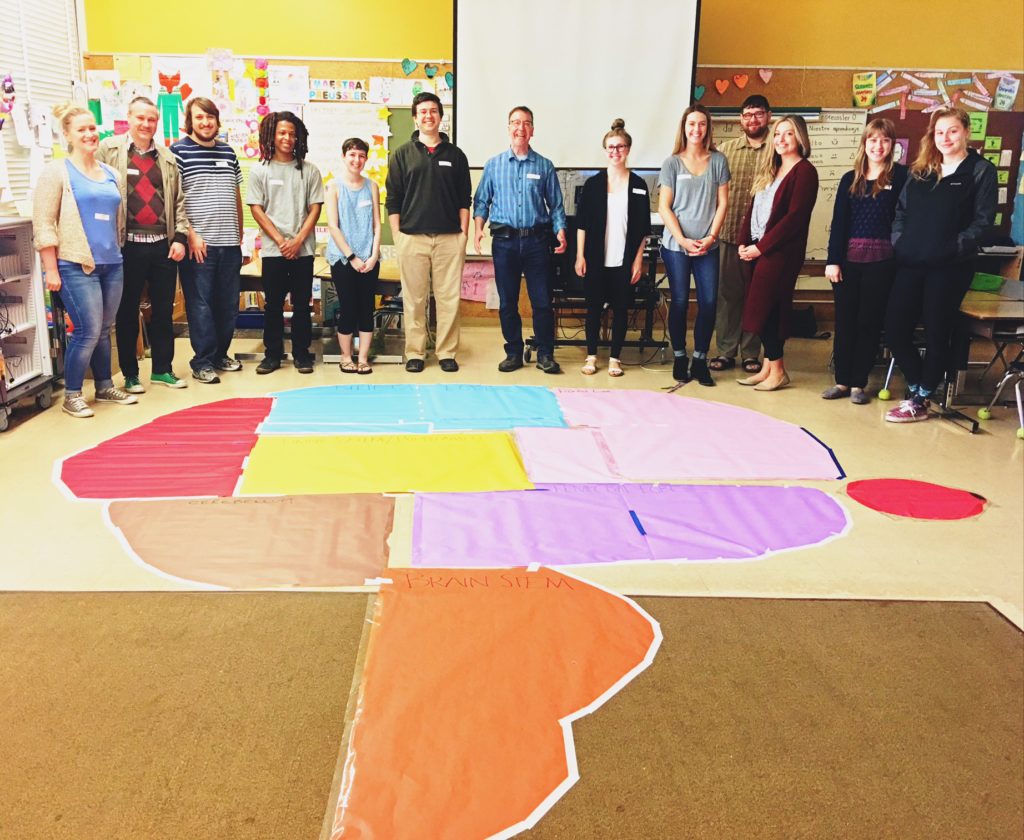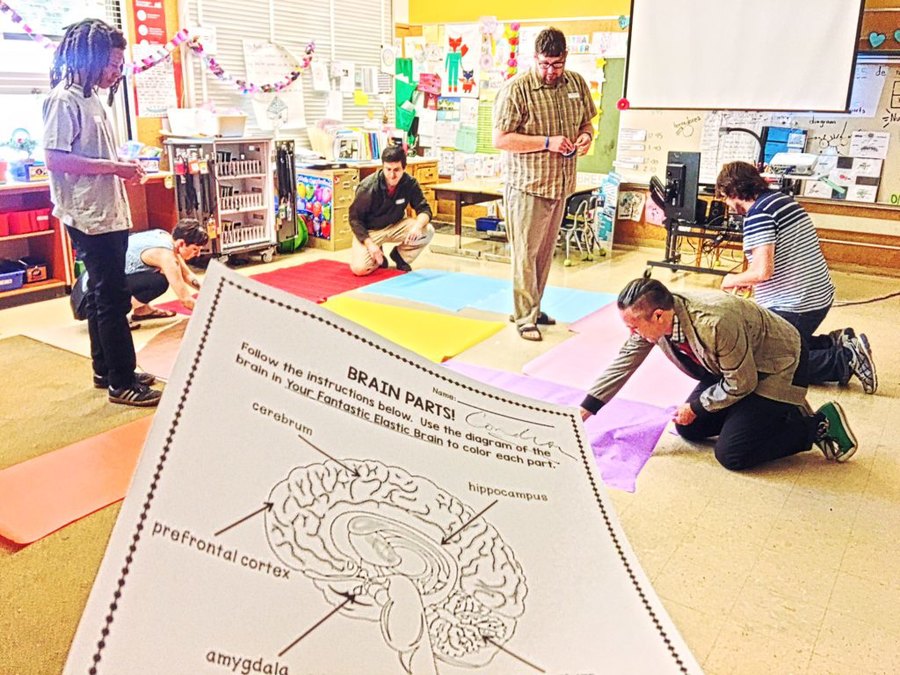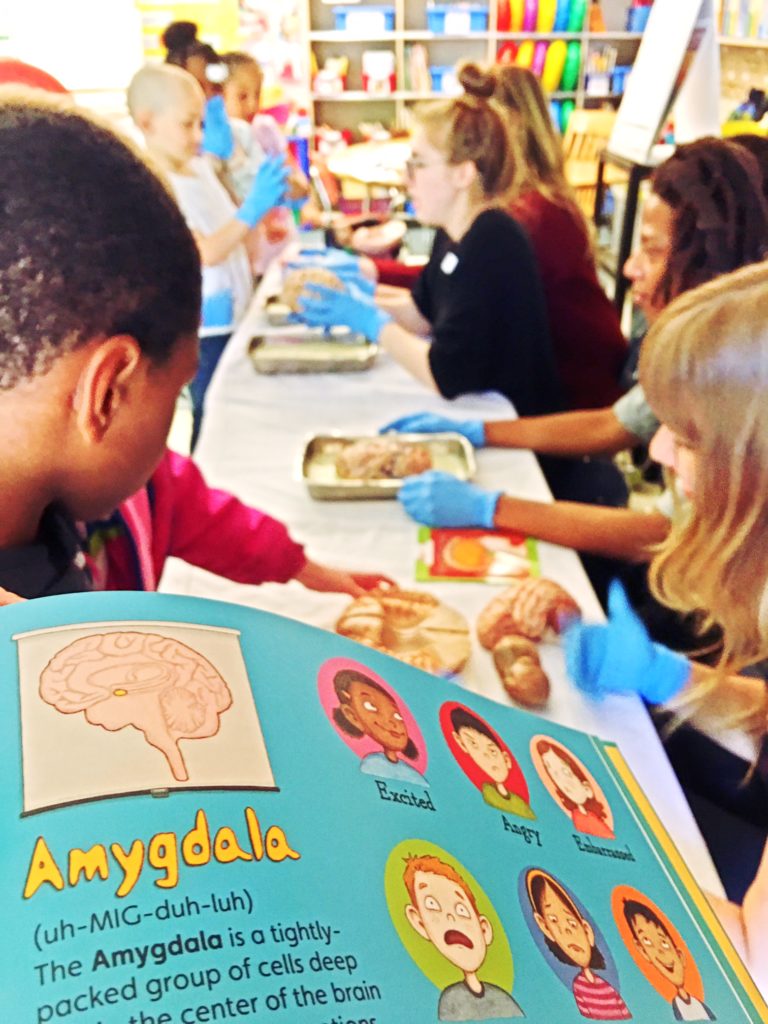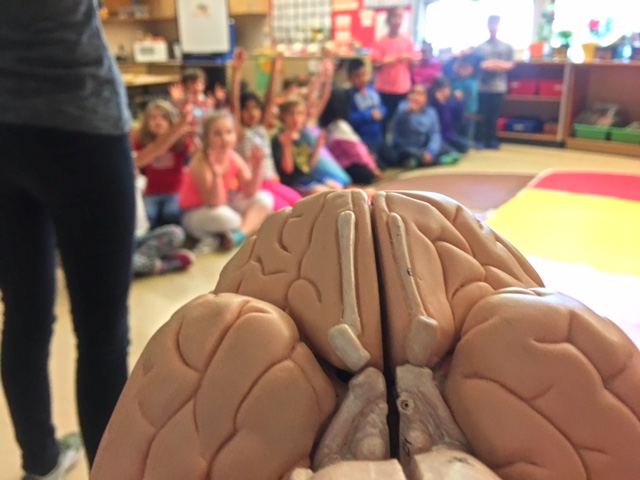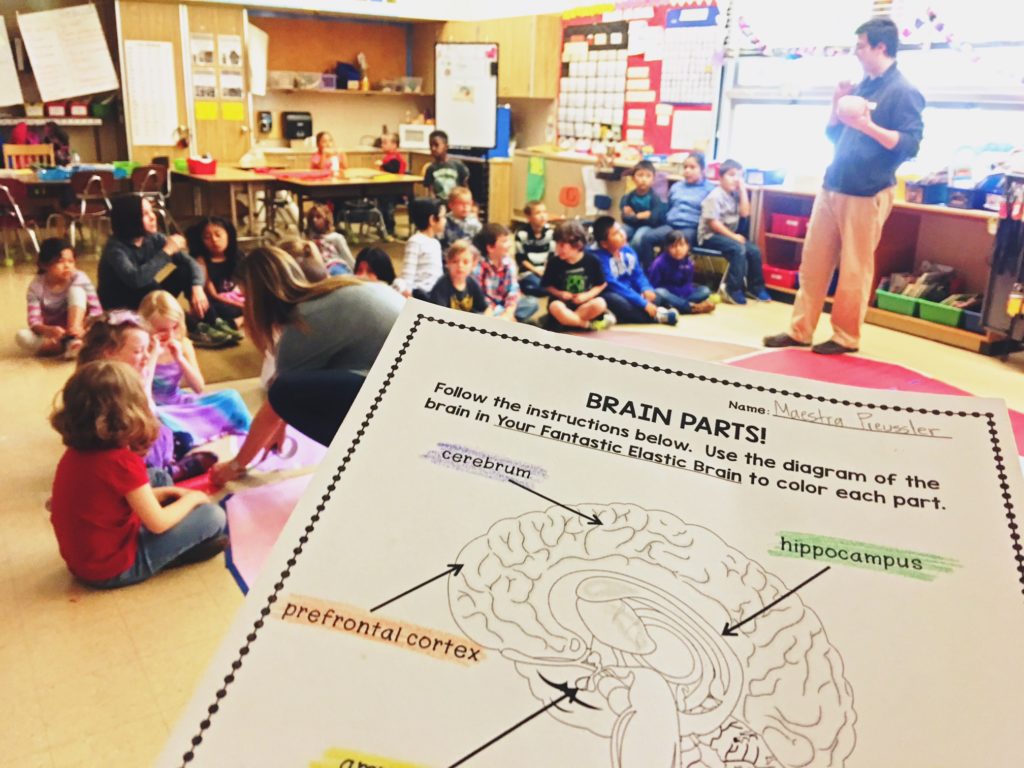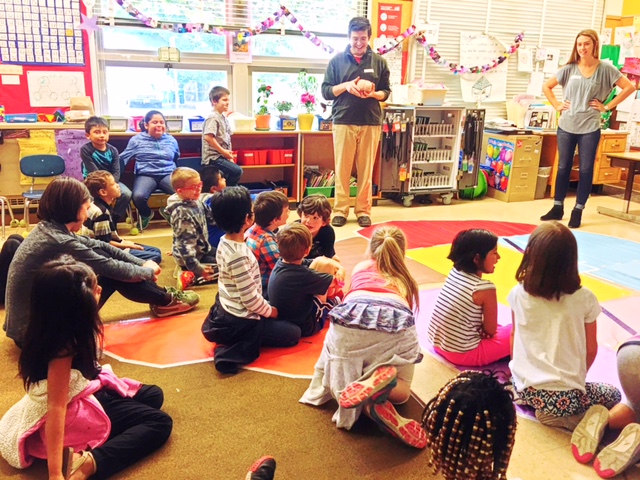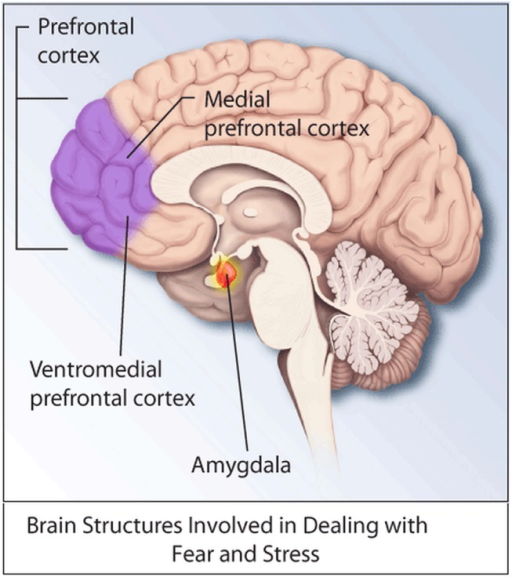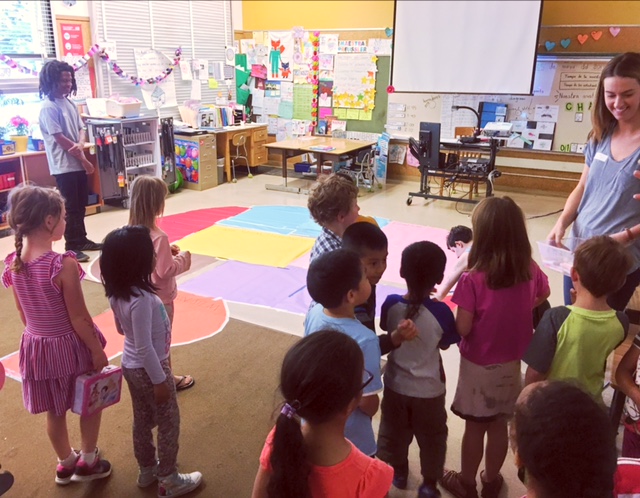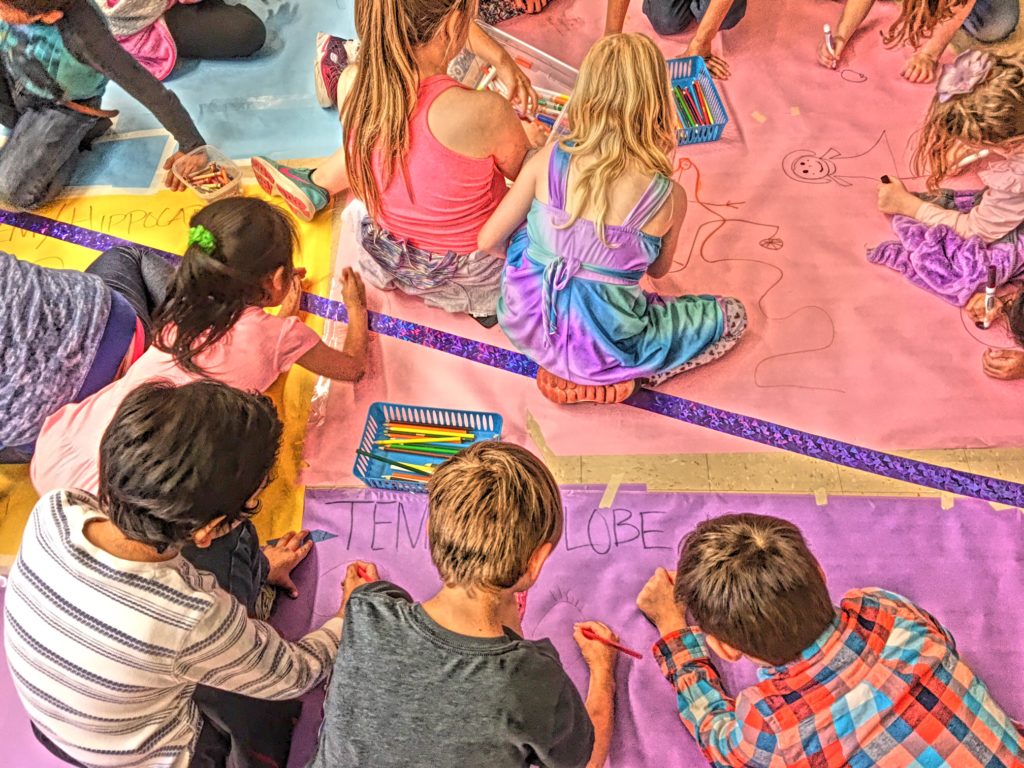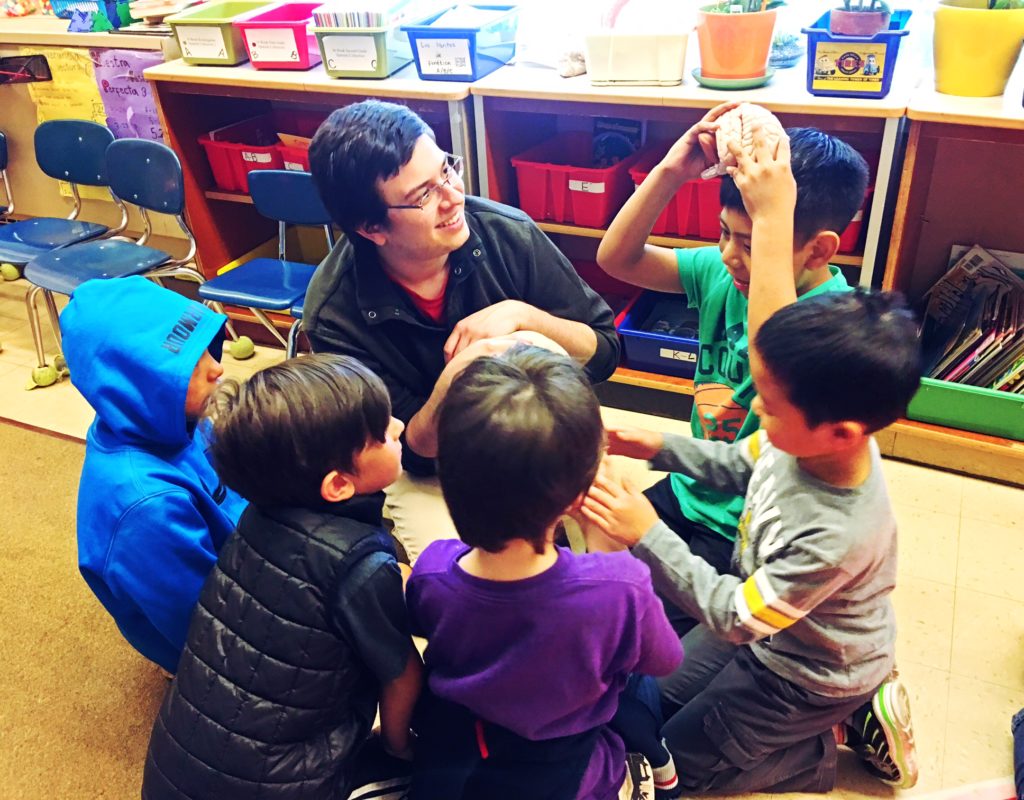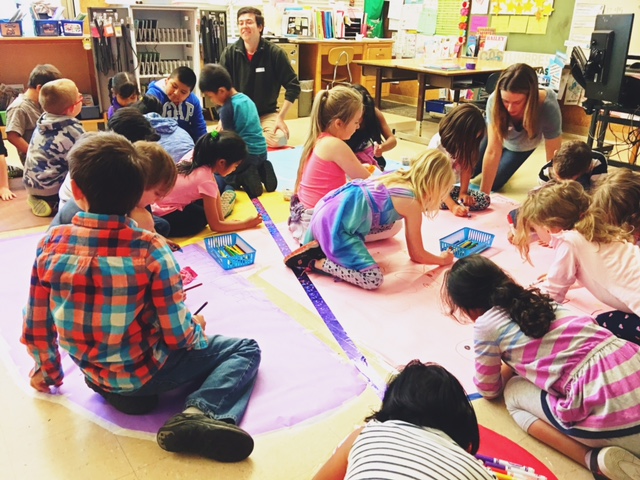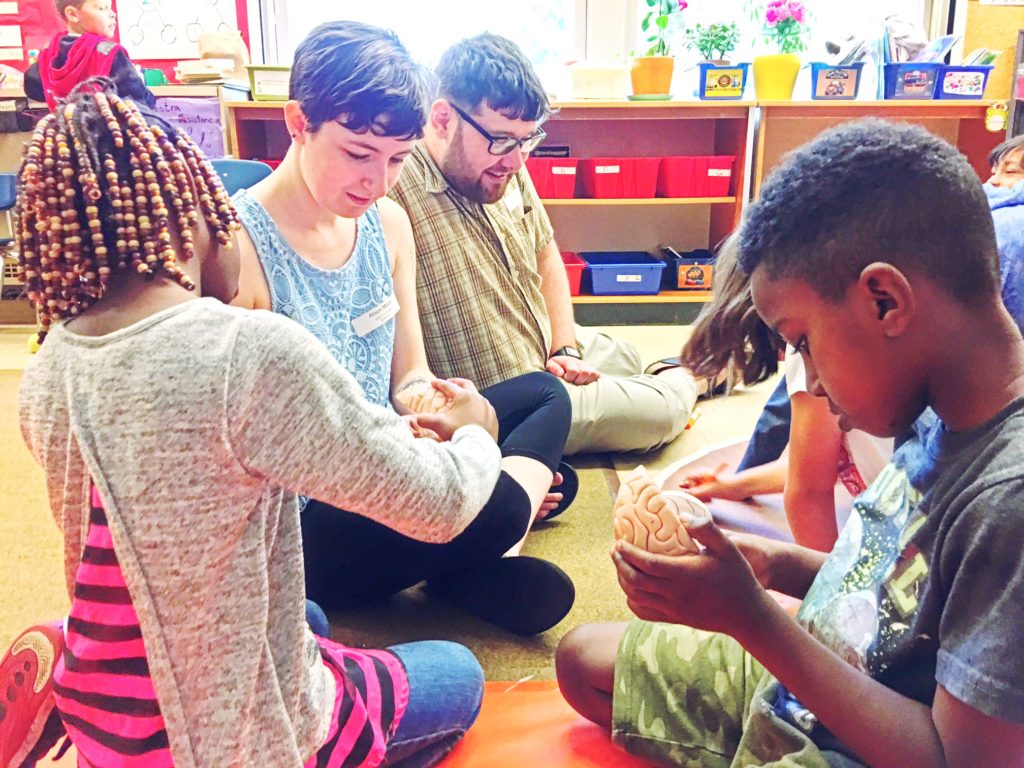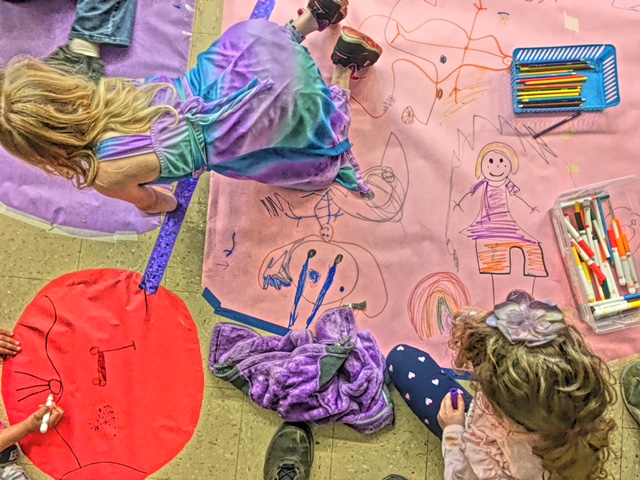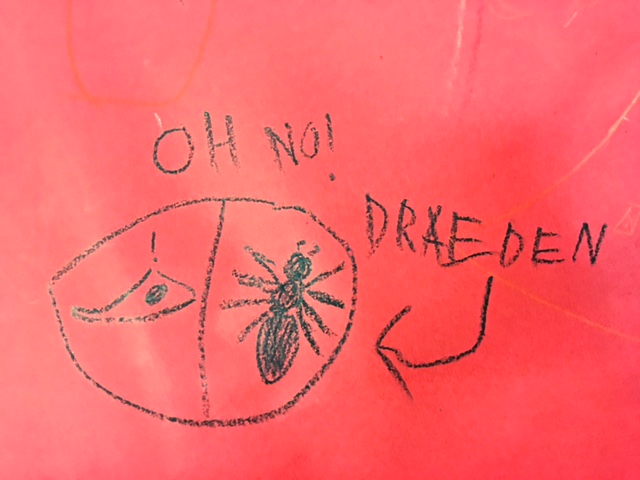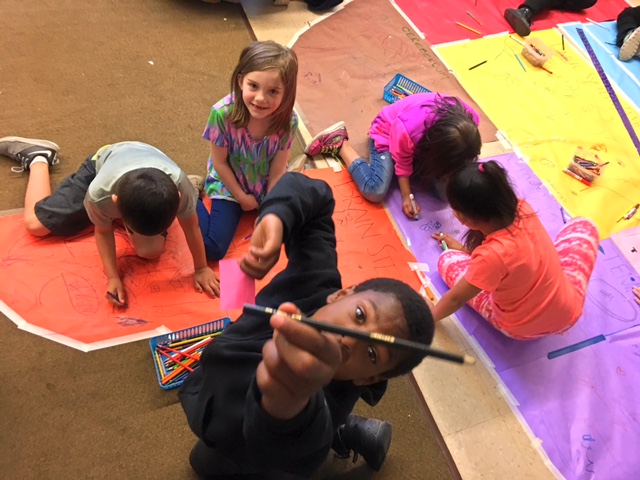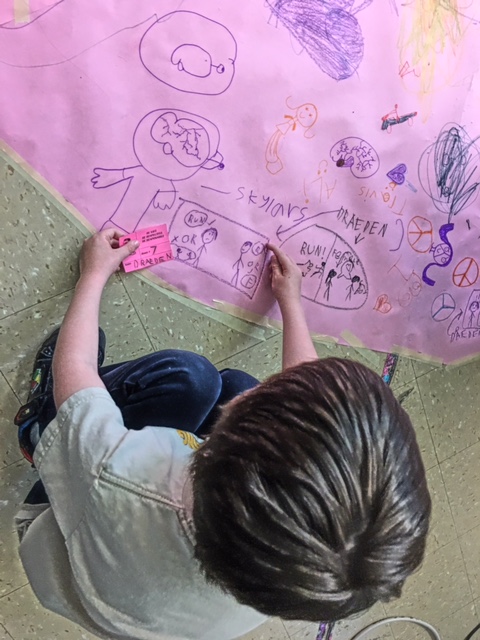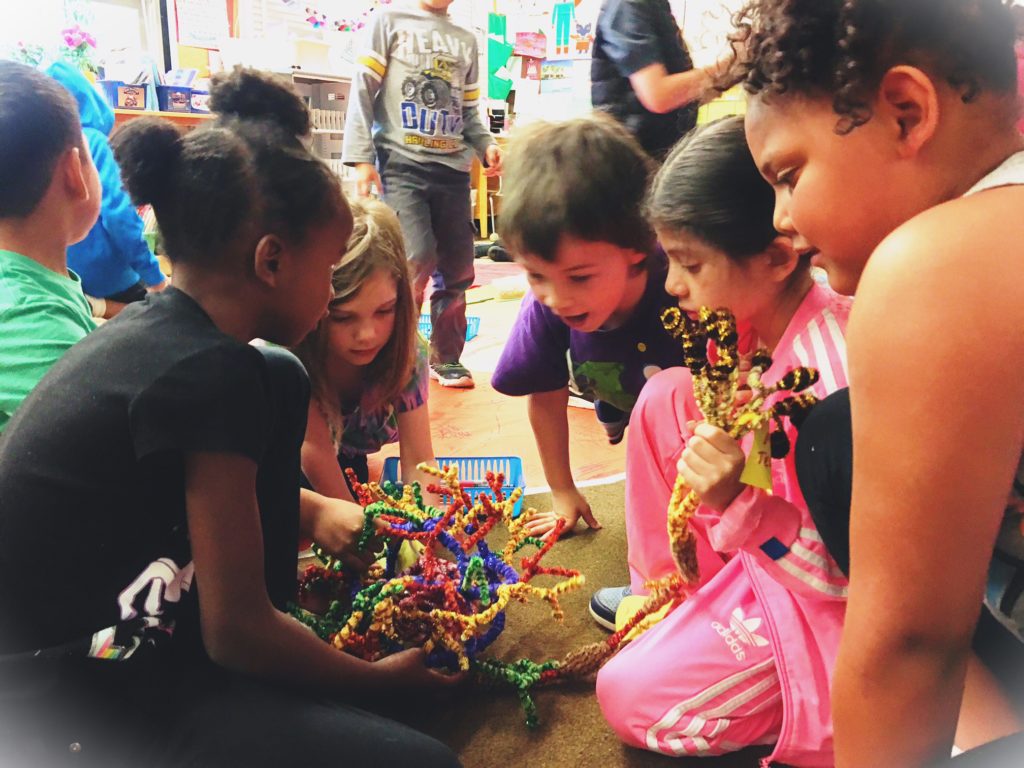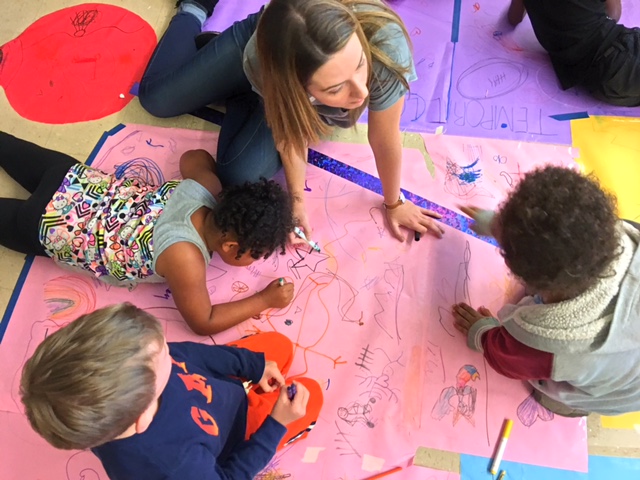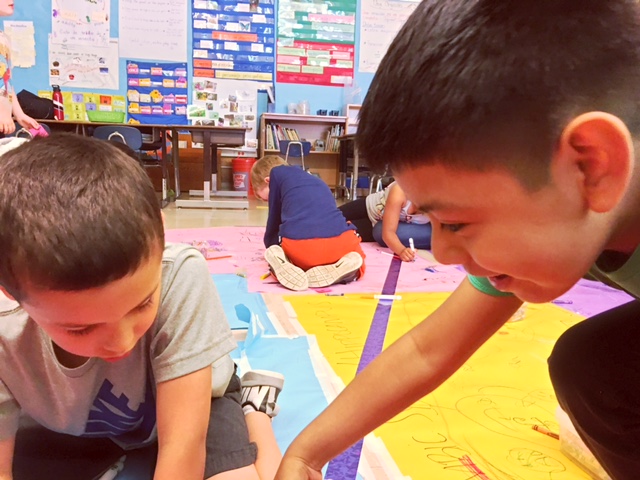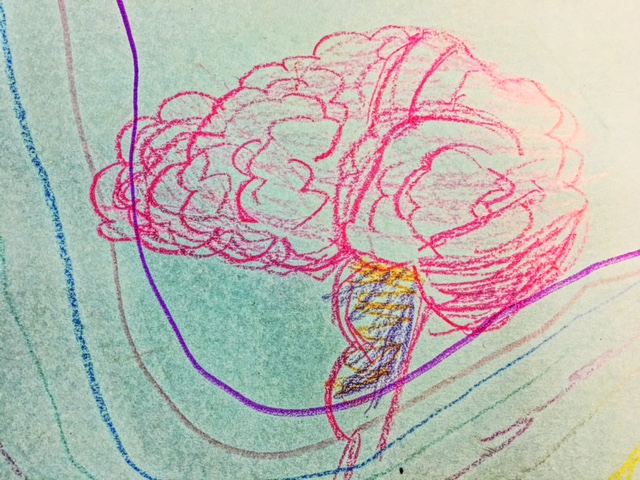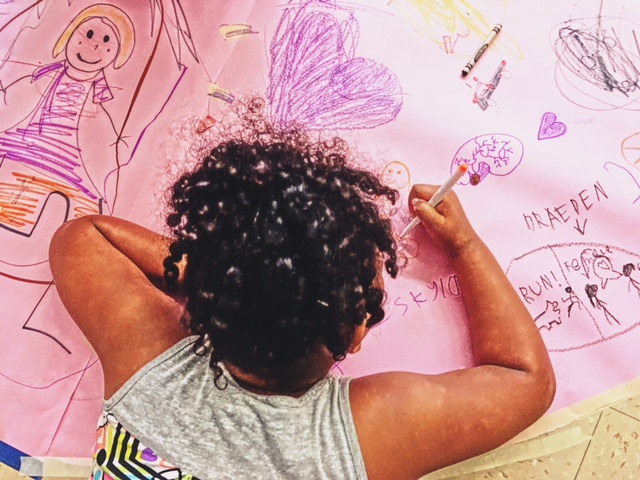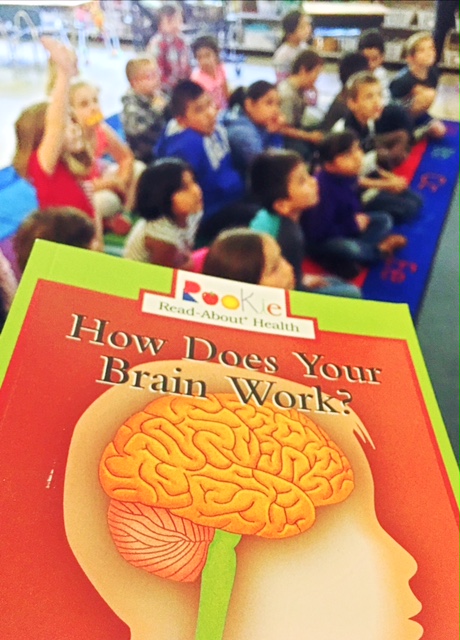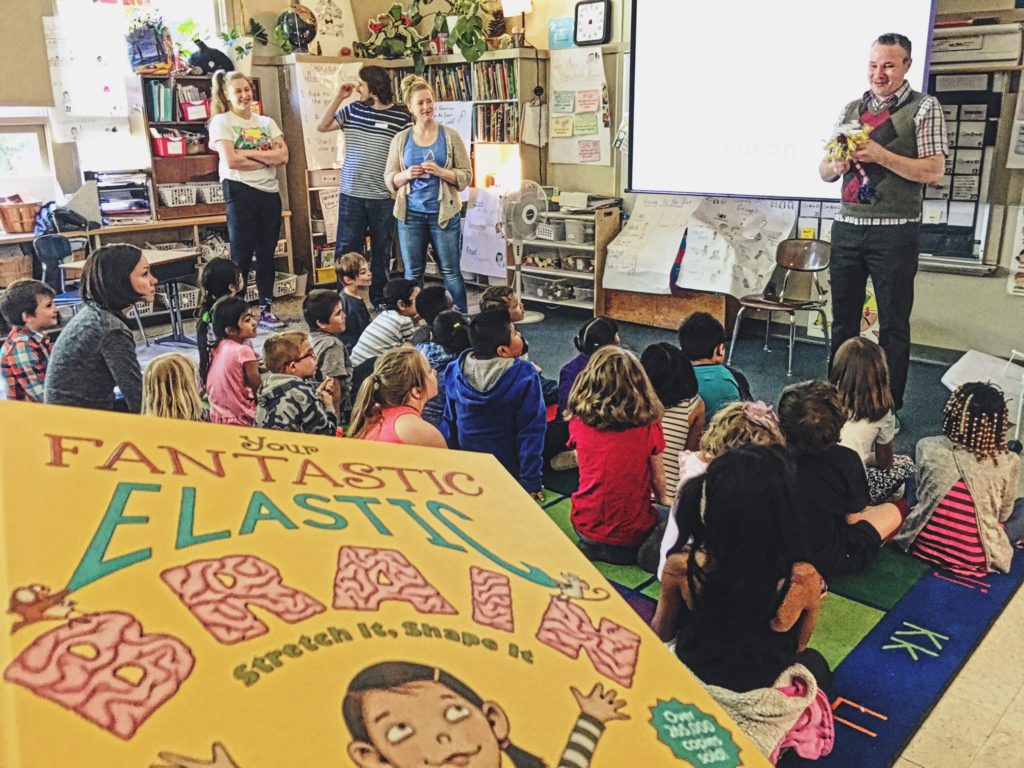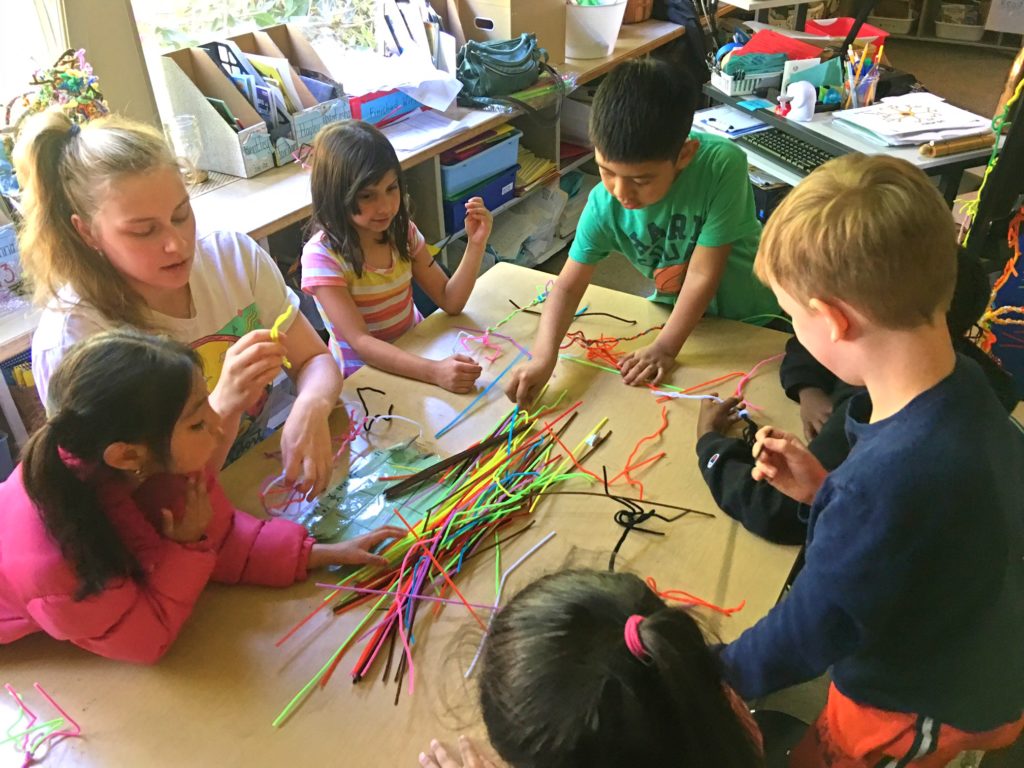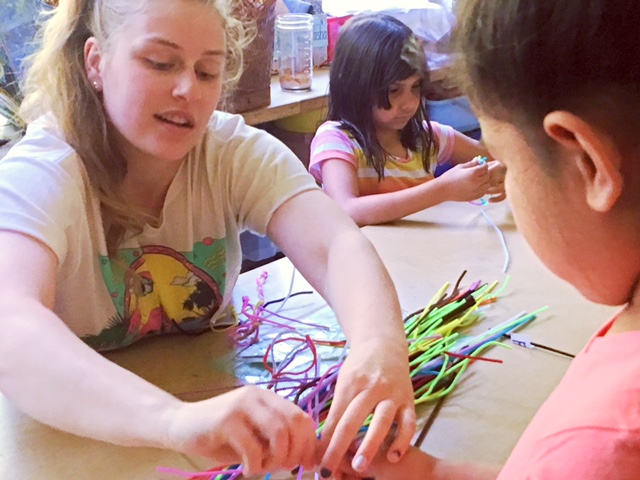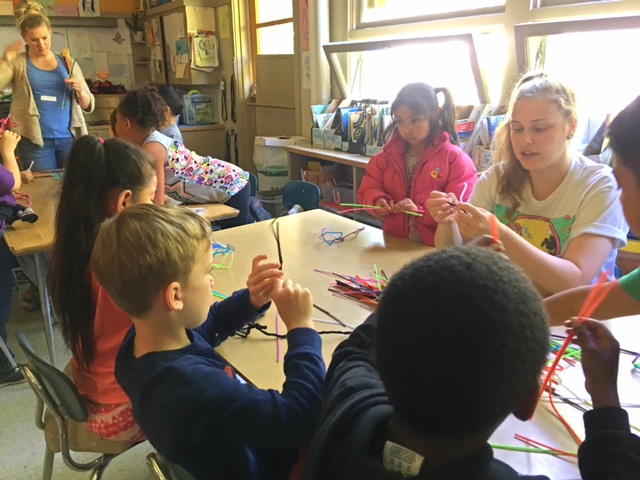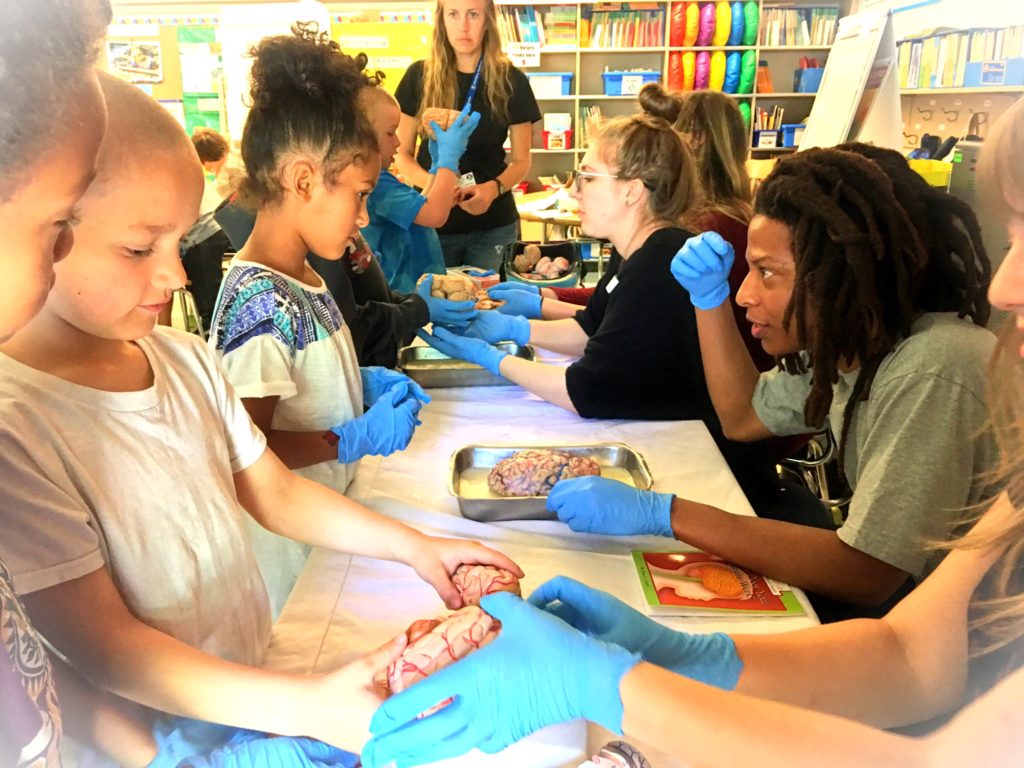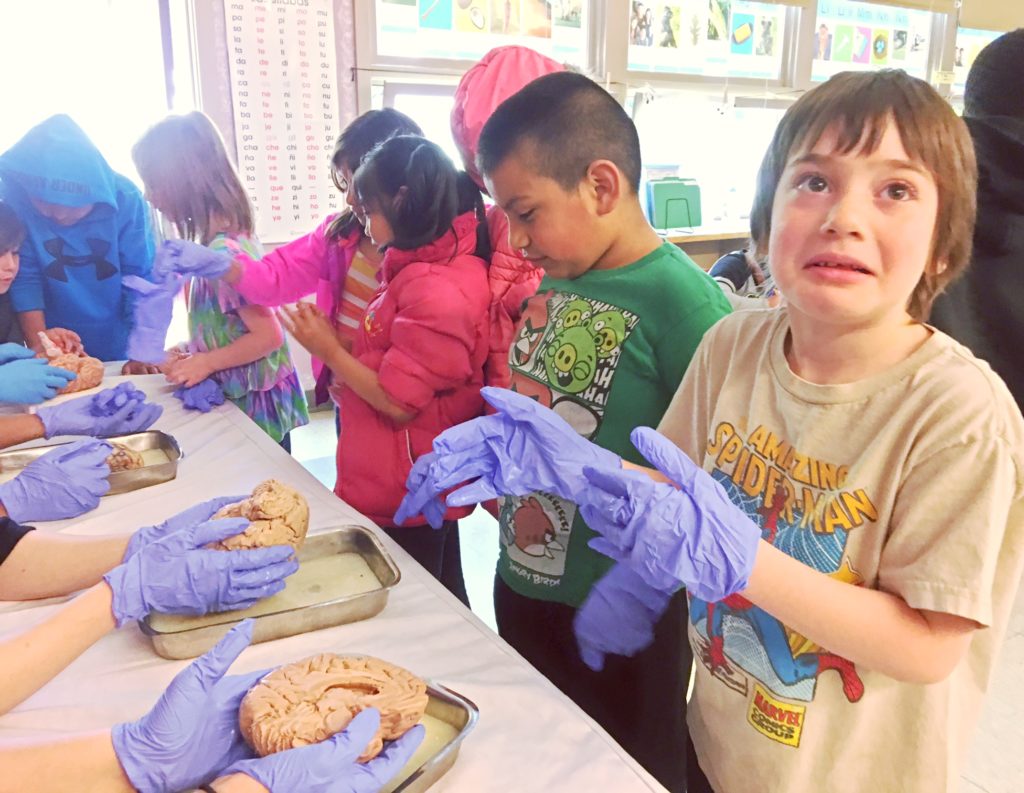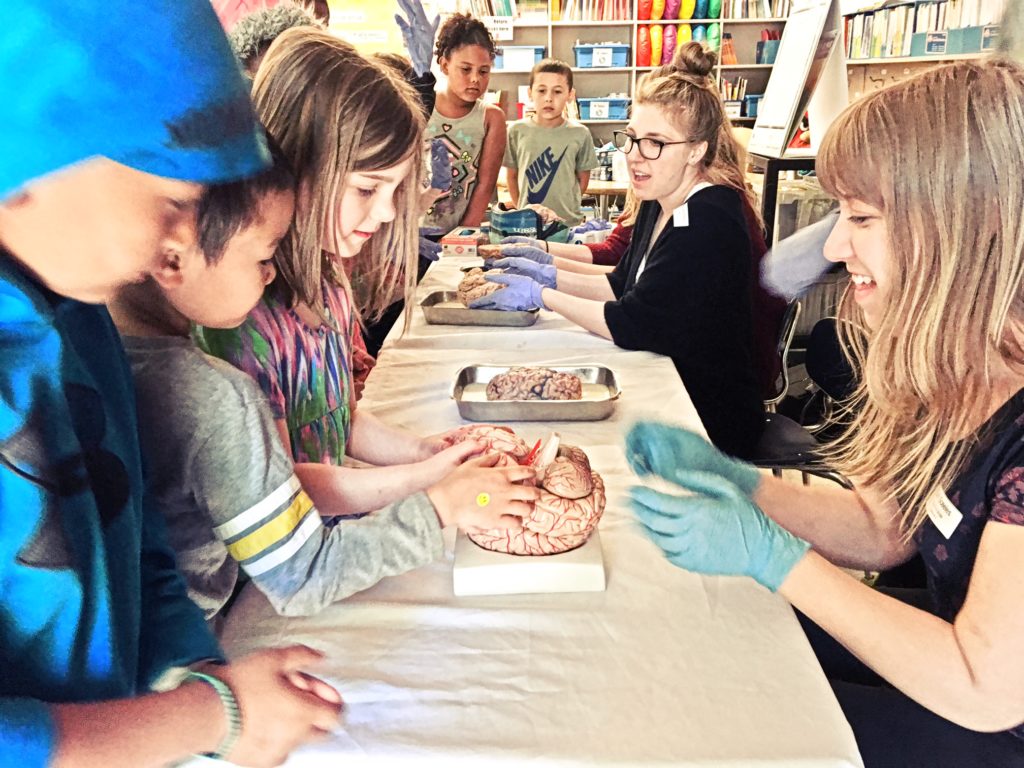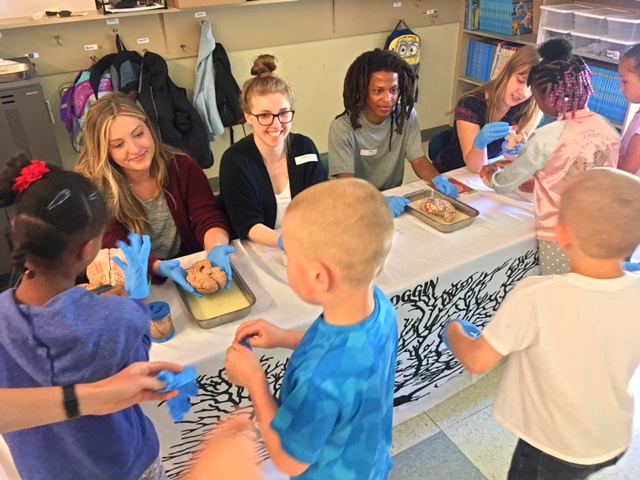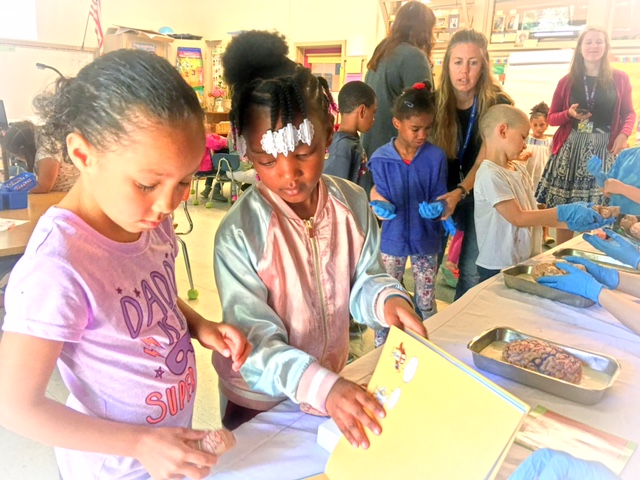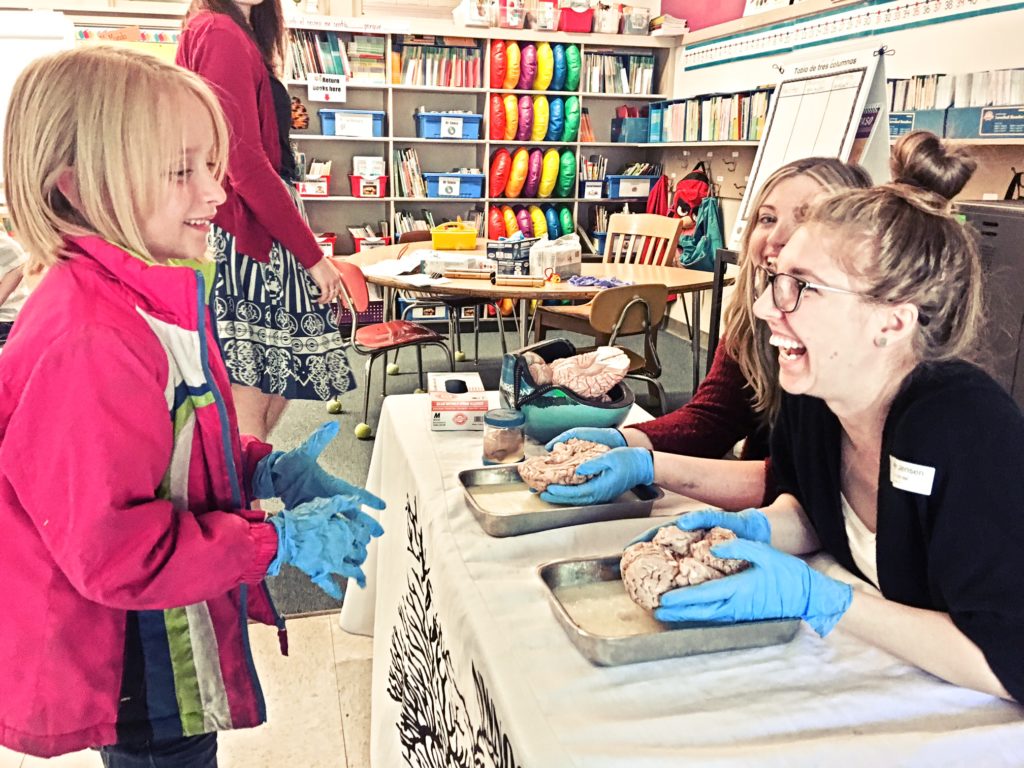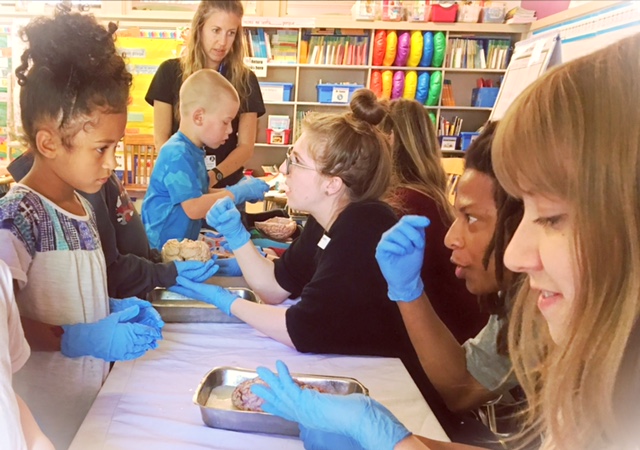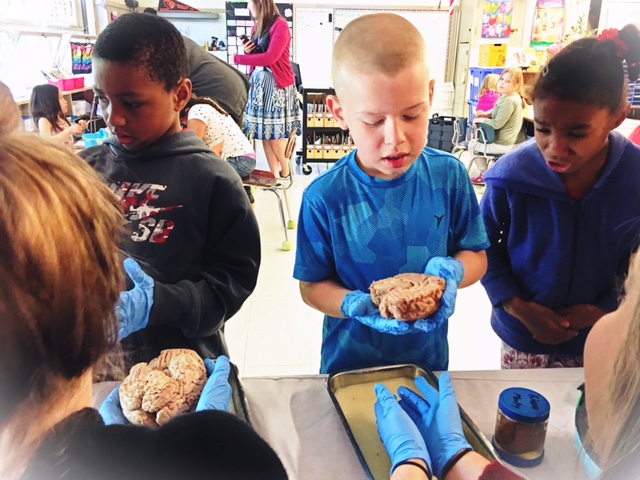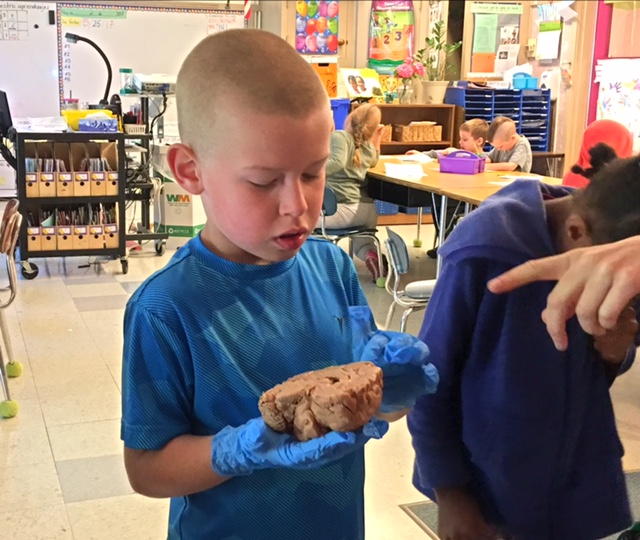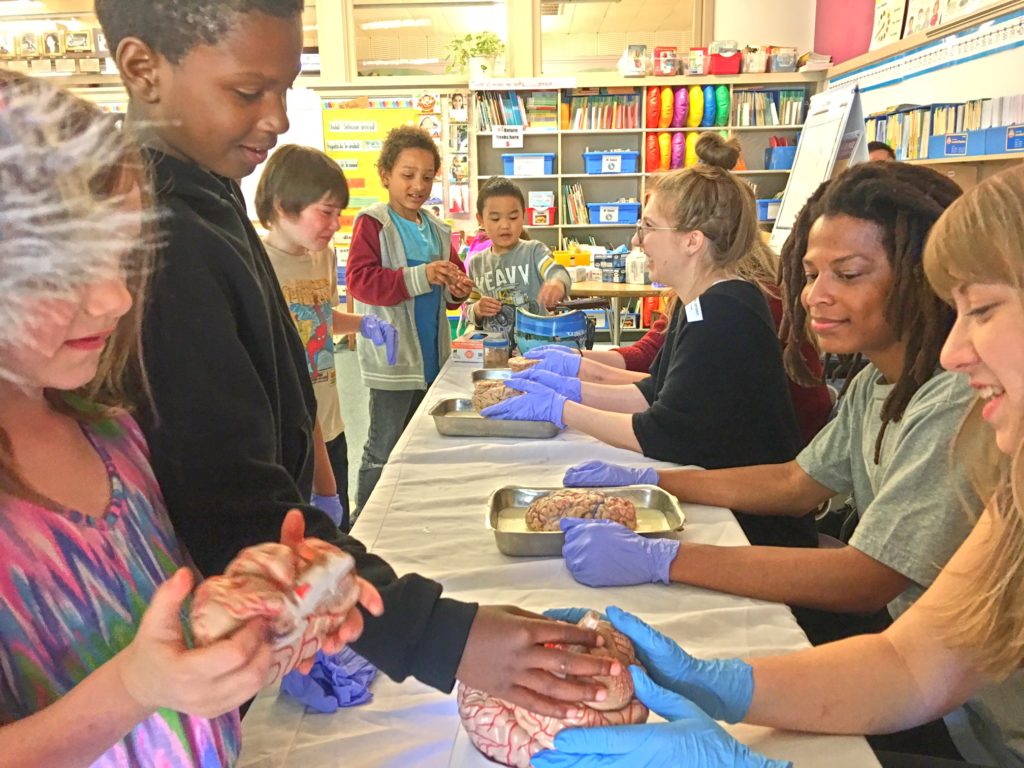North Portland’s Sitton Elementary has fast become one of our favorite Portland Public Schools, home to a diverse and curious community of students in the forested neighborhood of St. John’s…
We’d enjoyed a rainy, energetic day with multilingual kindergarteners and their teachers earlier in May, and now returned to Sitton in sunshine for más cerebros y arte with the first grade classrooms!
LEARN MORE: A Synapse with Sitton
LEARN MORE: Una sinapsis con Sitton
Our volunteers this time included Shawna Erickson, Mikey Smith, Ellie Sceeles, Jessica Trottier, Adam Bishop, Jennifer Jensen, Rebekah Hough, Travis Christian, Alison Mack, Jessica Patching-Bunch and Austin Abshire, all from Psychology at Portland State University…
We first met with Sitton’s awesome first grade teachers, Kimberly Condron, Natalia Preussler and Mehera Rosa Edgar – some perhaps a little more excited to examine the human brains up close than others! They found us colorful rolls of butcher paper, which we tore off in sheets to create another vibrant “brain map” on the floor…
Our brain map included the four cortical lobes visible on each side of the brain, along with the cerebellum (which contains over half the neurons in our central nervous system), and the brainstem. Students at Sitton have been learning that different parts of the brain do different things, and knew quite a bit about three regions: their amygdala, hippocampus, and prefrontal cortex!
With the help of their teachers, the first graders had learned that their amygdala, found deep in the temporal lobes, responds rapidly to emotionally charged situations, elevating their heart rate and blood pressure, changing their posture and facial expressions, and releasing chemicals into their bodies and brains that make them feel like fighting, or fleeing.
Their pre-frontal cortex, in contrast, lets them consider a situation more carefully, and with greater complexity and nuance, imagining felt consequences of behavioral steps they might take (like fighting, or fleeing), and letting them calm or quiet their amygdala. The pre-frontal cortex receives help via its neural connections with the hippocampus, an ancient, seahorse-shaped area in the middle of our temporal lobes, which lets us remember past experiences, and compare them with what’s happening now…
In the brain map room, we began by introducing ourselves, and described what we studied and researched. Adam Bishop explained what psychology is – “the study of how and why people act the way they do.” “How you talk to your friends, how you learn things, what makes you happy or upset, how you make good decisions, and how we can help everyone get along better” are all interesting topics in this field, he said…
Jessica Trottier asked the students if they knew what “stress” is – and many hands shot up. “It’s when your heart beats fast,” said one student. “It’s when I don’t want to do something but my mom makes me do it anyway.” “It’s my amygdala!!” Jessica asked everyone to take a deep breath, and then slowly let the air out. We did this a few times, and she asked if people felt any better…
Many did! “Do you like stress?” Most said no, but one student called out “yes!” We asked him why, and he replied “because I get out of class.” He apparently felt anxious in a classroom, and would act up so he would be required to leave. Outside of class he could “calm down,” he said. Jessica noted that we don’t always have control over what our bodies do, or how we react to our environment.
We reminded students that our brain’s amygdala, that almond-shaped clump of neural circuits inside the temporal lobe, may respond to what’s around us and make our hearts race faster, and our muscles tense up. The amygdala also develops faster in children than the pre-frontal cortex, and we need to make lots of social mistakes that can be threatening and scary and upsetting as we learn to wire up our frontal lobes to make better decisions. But controlled breathing can help, too.
LEARN MORE: NIH on Stress
LEARN MORE: Diaphragmatic Breathing Reduces Exercise-Induced Oxidative Stress
LEARN MORE: Relaxation techniques for stress
We asked if students had questions, and one girl fixed us with a stare and said: “I want to know how – exactly how – my hippocampus…works!”
LEARN MORE: Structural Plasticity and Hippocampal Function
We then had students think about different areas of their brains, and try drawing – directly on our brain map – what each region did! We included a big yellow midline section to represent structures like the amygdala and hippocampus, areas important for emotion and memory…
Your amygdala detects a stimulus (bug!) and responds – “oh no!”
Should I fight, or run? One student told us his prefrontal cortex helped him make a good decision by choosing to run, “so I won’t hurt anyone…”
We worked with about 75 students in three separate classrooms at Sitton. Aside from the brain map room, we talked about brain cells and made pipe cleaners neurons…
And we also examined real brains!
Great questions, and lots of learning underway at Sitton, with some sharp students who know their brains. Many thanks to Kimberly, Natalia and Mehera Rosa for welcoming us into the classroom!



